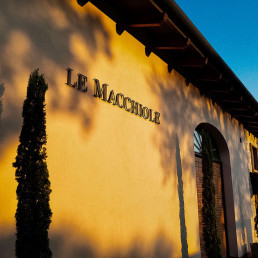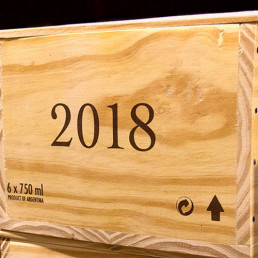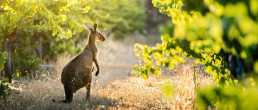
Our competitive cousin across the Tasman Sea is a vastly more diverse winemaking country than it’s given credit. In the wine world, like a gnarly character actor in a gangster movie, Australia has been typecast too frequently and it’s time to take notice of the new confidence and styles coming out of this vast continent of previously-held cliches.
There’s a lot of momentum in the Australian wine space right now, with huge inroads being made into new global markets with diverse, vibrant, and unique Australian wines, newly exciting us here at D&N, also international wine buyers and then driving interest and sales for restaurants and retailers.
“Australia is a leader of New World wine and a hub of technological advancement in the wine industry.”
Jancis Robinson MW
Perhaps it is an exciting candour on the home turf that underpins the renewed interest and confidence that surrounds Australian wine, where winemakers believe in themselves and their terroirs and wine. In fact, there’s unquestionably a great wine for every palate and preference in this year’s new releases from our Aussie wineries.
What we’re seeing at D&N is that the “new” message for the wines of Australia is it’s all about quality and diversity, no longer the domain of those “critter” wine labels that littered the lower supermarket shelves for far too long.
The Australian playing field has levelled between what winemakers used to clearly separate as warm and cool-climate regions, and the meeting place is that of freshness and balance. Freshness can be found in every guise, from aromatic whites to bold reds.
These savvy Aussie winemakers have a keen eye on drinkability at every step.
A Fair Dinkum Fun Fact:
About two million bottles of wine leave Australia every day to go to 111 international markets
There’s another shift in the Aussie wine world – that of confidence. Confidence in terroir, in older vines, in the work to nurture vineyards, respect for the land, and in producing wines that have unique flavour and style. And with so many different regions, styles, and vintages, all represented in high levels of quality – this is why Australian wine is back in the game! And D&N is ready to show them off!
For starters, the business is very healthy and the demand for high-quality wine is underpinning trade as much as a thirst for a quality and value proposition from Australian wine. There’s a strong and growing appetite for authentic, regionally specific wines.
Secondly, Australia is now accepted as one of the largest and most widely diverse wine producing nations. It is a vast continent with an almost endless array of stylistic possibilities, now producing a diversity of wines with great complexity. There really is a colourful and interesting life after full-bodied shiraz!
A Fair Dinkum Fun Fact:
Around 30 million glasses of #Aussiewine are consumed each day across the globe: that’s 1.6 billion a year! From London to New York to Auckland to Wanaka, the world loves Australian wine.
Australia’s winemakers have emerged from that jammy blockbuster shiraz stereotype and become more aware, sustainably confident and determined to make great wine. The Lucky Country is sharing their vinous ‘luck’ with us happy imbibers!
“For consumers and the global wine trade, there has never been a better time to get into Australian wine, or get back into Australian wine, and celebrate all that’s great in the offering.”
Nick Stock, Wine Writer
Let’s not forget the vine age of Australia’s plantings. The expansion of plantings to back Australia’s strong export boom in the 1990’s is now past their adolescent years and delivering qualities that are associated with the site, rather than simple varietal fruit. The mature vines are underpinning more consistent quality and style. They produce wines that are more reliable and more age-worthy.
Another strong undercurrent is that more and more winemakers are exploring principles of non-intervention in winemaking. The trend for more natural winemaking is being applied to better-farmed grapes and the ensuing better-quality wines are being recognized. This has influenced mainstream winemakers, who are now much less likely to ‘overcook’ their wines. Moreover, lighter reds have become, dare we say, fashionable, pulling fuller-bodied reds back from the brink.
“From over-extraction to too much oak, [Australian] wine now is dialled into a tighter, more precise, and more natural fit.”
James Suckling.com
Of course, we must acknowledge that this sun-baked continent has no shortage of ripe, robust reds. Its international reputation is based off this style, and largely a single variety, Shiraz, the country’s most planted grape. A huge array of very average blended “South Australian” Shiraz is on the market but when you go regional then that’s a whole other story – better quality and expression of terroir.
Remember, large parts of Australia also have craggy mountains, lush pastures, misty mornings, and crisp, cool evenings. That’s not to mention varied soils and more than 100 different grape varieties planted across the country in 65 designated wine regions. We are really spoilt for choice from the land of kangaroos and koalas ☺
Wine Regions
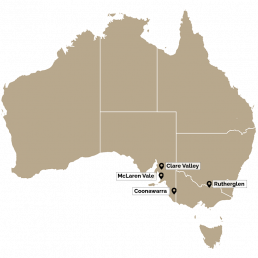
Australia is divided into seven major wine producing regions, with 65 unique wine sub-regions, each with its own diverse, natural landscape and mesoclimates. Having this incredible diversity of terroir creates the ideal environment for growing 100’s of different grape varieties, making Australia a wine lover’s dream country!
A Fair Dinkum Fun Fact:
Australian grapevines are some of the oldest in the world. In the 1800s, many established vineyards in Europe were destroyed by the phylloxera pest. But thanks to strict quarantine rules, South Australia remained unaffected.
Probably most well-known is the South Australia wine region. Understandably, as more than 40% of all vines grow in this state and are located around the city of Adelaide, known as Australia’s wine capitol.
Some of Australia’s most well-known wine producers are located in South Australia. The overall climate in South Australia is hot and dry, although many sub-climates exist throughout the region.
Let’s have a good old gander at our Dhall & Nash Aussie champions and the regions they represent…
McLaren Vale
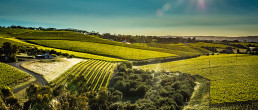
McLaren Vale has the oldest commercial vineyard sites in all of South Australia. It is also the proud custodian of one of the most complex geological tapestries in the whole country. There are some 550 million years of soil heritage, spanning 19 unofficial districts with over 40 very distinct geologies.
Classic Aussie Shiraz flourishes here and has long been the signature grape of this Mediterranean-style climate. The region’s ancient vines thrive under the calming influence of the nearby Southern Ocean, which moderates climatic peaks that increasingly impact other parts of south-eastern Australia.
McLaren Vale’s calling card is the ability to produce powerfully concentrated wines. On the quiet though, its unsung hero is actually Cabernet Sauvignon. Cabernet in this region is able to achieve varietal integrity, structure, and longevity like nowhere else in South Australia outside Coonawarra, and can achieve this with depth, presence, and concentration. Watch out Shiraz, there’s another bruiser on the block!
Mollydooker’s Carnival of Love Shiraz has now been listed in Wine Spectator’s ‘Top Ten wines in the World’ three times.
Mollydooker
Where wine goes to have fun!
A powerhouse in every sense of the word, MollyDooker has been a crowd-pleasing, wow-inducing, glass-filling favourite in the Dhall & Nash portfolio for years. The Mollydooker story could easily be a script for Hollywood. There were quite a few difficult financial false starts and wine industry roller coaster rides for the co-founders Sparky and Sarah Marquis.
Working as for-hire winemakers, Sparky and Sarah had a string of high-profile jobs in the 1990s and early 2000s, including overseeing several vintages at Fox Creek, Two Hands, and helped develop cult favourites Henry’s Drive, Parson’s Flat and Shirvington. When they started their own businesses, they twice found themselves on the brink of losing everything. Down to their last $17 the wheels of fortune were about to turn in their favour. As both Sarah and Sparky were left-handed, they called their new venture Mollydooker, Australian slang for Left-handed.
In 1999, their mad passion and crazy ideas were rewarded with the ultimate industry accolade – named as Australian Winemakers of the Year. This was just the beginning of the immense praise and international acclaim they would soon receive.
In 2006 Robert Parker reviewed their very first vintage for Mollydooker. He rated The Boxer as the ‘Best Value Red Wine in the World’, Two Left Feet as the second, and Maître D’ as the fourth. Their Violinist was also chosen as the ‘Best Value White Wine in the World’. The wines sold out in nineteen days.Then, when the Carnival of Love (WA:99pts) and Enchanted Path (WA:96pts) were released, they sold out in five days! The following year, their Velvet Glove Shiraz became their fifth wine to be awarded 99 points by The Wine Advocate.
Unsurprisingly this success fuelled the purchase of their own vineyards and a winery in 2007. The current property sits on 115 acres on the magical Seaview Ridge in McLaren Vale, home to some of Australia’s most iconic wines.
‘We make wines that make people go WOW, through attention to detail and commitment to excellence!’
The Mollydooker “Motto”
Through their tough and modest beginnings Sarah and Sparky Marquis still had faith in their grand plans and radically innovative ideas. Firstly, they introduced their Vineyard Watering Programme in the vineyards which allies close monitoring of vine development with carefully timed irrigation to achieve the healthiest grapes possible. Essentially the concept is based on watering the vines to lower sugar ripeness until the flavour ripeness catches up. Genius!
The Mollydooker wines are made to emphasize fruit over tannin, and they have trademarked a tasting system to test this. The system of rating is called the Marquis Fruit Weight™. This is their unique formula to measure how far back on your tongue the velvety sensation of fruit goes. If parcels don’t qualify at the required Fruit Weight, the wines aren’t produced. Now that’s devotion to unique winemaking perfection!
To this day, with Sarah Marquis at the helm helped by her son and daughter, Mollydooker’s sassy and vivacious wines continue this story of phenomenal and consistent success.
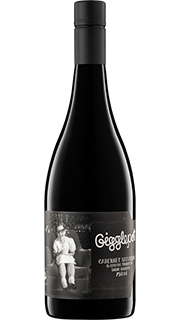
Mollydooker "Gigglepot" Cabernet Sauvignon 2018
McLaren Vale, Australia
“The 2018 Gigglepot Cabernet Sauvignon displays a hint of mint on the nose, but just a hint, leaving plenty of space for the dark cassis and chocolate notes that characterize this big, bold Cabernet. It’s full-bodied, plush, and velvety, with a slightly brighter finish and mouth-watering length”
92 points – Robert Parker’s The Wine Advocate
“Rich and opulent, with notes of chicory, chai tea, caramel and cream soda surrounding a core of kirsch, maraschino cherry and framboise. The tannins are polished and smooth, with a generous, spicy finish. Drink now through 2035”
90 points – Wine Spectator
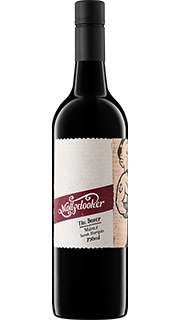
Mollydooker "The Boxer" Shiraz 2021
McLaren Vale, Australia
A new release & it’s a left-hooked knockout in both namesake and drinking pleasure. The Boxer Shiraz encapsulates the Mollydooker style to a tee and punches well above its weight. A blend of McLaren Vale and Langhorne Creek fruit has helped create a wine of many complexities and decadence.
“Rich and deep the 2021 Boxer manages to be elegant and powerful. A core of fresh plum, mocha and liquorice lift out of the glass. A soft plummy mouthfeel, well measured tannins, and slightly toasted oak compliment the rich fruit, creating a wine with many layers. Barrel fermented and matured in 100% American oak, using 45% new, 25% one year old and 30% two-year-old barrels.”
Winery Notes

Mollydooker "The Boxer" Shiraz 2020
McLaren Vale, Australia
“Black licorice, kirsch and Kalamata olive notes are dense and dark, but give way to plush blackberry, blueberry and Earl Grey tea accents. This harmonious version gains complexity on the finish. Drink now through 2030”
92 points – Wine Spectator

Mollydooker "The Boxer" Shiraz 2019
McLaren Vale, Australia
“is—no surprise here—a big, plush wine that’s labelled at 16% alcohol. Despite that, it’s only a bit warm on the palate, with sufficient masses of blackberry fruit and vanillin oak to stand up to the alcohol. Full-bodied and supple, its barrel fermented in nearly 50% new oak, all of it American, but somehow comes across as pretty and harmonious, an oversized version of Fantasia’s Hyacinth Hippo dancing to its own beat.”
90 points – Robert Parker’s The Wine Advocate
“Thick, with sink-your-teeth-into-them tannins and powerful, ripe blackberry, huckleberry and blueberry flavors that show aromatic accents of allspice, Earl Grey tea, vanilla bean, milk chocolate and dried violet on the finish. Drink now through 2036”.
92 points – Wine Spectator
All Mollydooker reds are Vegan friendly
Coonawarra
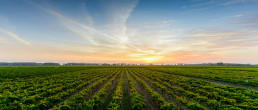
Coonawarra is one of Australia’s most internationally celebrated wine regions, famous for its vivid red soil and world-class red wines. This strip of terra rossa (‘red soil’) is one of the most valuable patches of earth in Australian wine. It’s a narrow strip of coveted land on the Limestone Coast, between Adelaide and Melbourne, and although it is 80 kilometres from the coast, it benefits from maritime influences thanks to its flat terrain. Being a cooler climate than many other South Australian wine regions, Coonawarra provides ideal conditions for producing elegant, award-winning wines. This is a grape-growing haven. Today it’s home to a collaborative community of national and international companies and multigenerational wine families just like D&N’s own Coonawarra champion – Zema Wine Estate.
Zema Estate
Some wines offer value time after time yet continue to sneak under the radar. Zema Estate wines don’t get the attention they deserve. Time to change that! Zema is a proudly independent Coonawarra winery, forged in Australia but born of a passionate Italian heritage. It is a brand that embodies two of the greatest things about wine – terroir and history.
Based in Coonawarra, South Australia, Zema was founded by Demetrio and Francesca Zema in 1982. From very humble beginnings in Calabria Italy, the Zema family worked tirelessly to build the quality and reputation of their wines. They have achieved this through attention to detail – hand pruning, careful fruit selection, meticulous viticulture, passionate winemaking, diligent bottle ageing and a deep respect for the place and provenance of Coonawarra.
The Zema family is proudly traditional in the ‘vine to wine’ process, using only 100% Coonawarra “estate grown” fruit. This family’s commitment to traditional vineyard practices ensures the wines are beautifully balanced with excellent varietal definition. Typically, low yields optimize flavour development producing wines that epitomize the Zema philosophy of a heartland style with deep colour and ample fruit richness and concentration.
Zema Estate is today a jewel in Coonawarra’s crown. They now have 150 acres of vines in three prime Coonawarra locations and although the family deservedly takes great pride in their achievements, they never lost sight of their original philosophies and to create consistent wines that today really are an integral part of the Australian wine landscape.
Second generation Nick Zema and the extended family will celebrate the fortieth anniversary of their winery in 2022, a wonderful achievement. It has not always been easy, but they have never faltered in producing quality regional wines which represent excellent value. Succinctly summed up by rebel wine critic Mike Bennie of Wine Front when he said that Zema wines have that “Old school feel.”
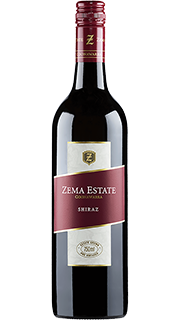
Zema Estate Shiraz 2016
Coonawarra, Australia
“Estate-grown, hand-picked, matured in American and French oak for 15 months, from a stalwart of the region. Good colour: the complex bouquet ranges through black berry/cherry fruit, spice, and Coonawarra earth, which all appear in the full-bodied, balanced, and long palate. The tannin structure is in tune with the oak, adding the icing to the cake. Regarded by Zema as outstanding. Drink by 2041.”
95 points – James Halliday Australian Wine Companion
“Very deep, dark colour with some age creeping in at the edges. Strong chocolate, mocha and toasty barrel aromas on the bouquet, the palate is full-bodied and rich, with generous extract and chewy but balanced tannins that would melt away with a hearty roast meat dinner”
91 points – Huon Hooke, The Real Review
All Zema Estate wines are Vegan Friendly
Clare Valley
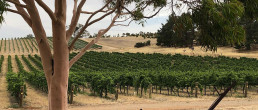
Clare Valley this small wine region has a big reputation for its world-class wines, especially its Rieslings. Indeed, to most wine lovers, Clare IS Riesling. Nestled high in the Mount Lofty Ranges just 90 minutes from Adelaide in South Australia, the Valley’s altitude sits between 300 and 600 metres above sea level, and the Spenser Gulf, 90kms to the west provides subtle, but moderating sea breezes during the notoriously warm growing season. Clare Valley’s variation in diurnal temperature is thankfully, huge. And with its wide array of soil types sitting atop rocks formed hundreds of millions of years ago, this terroir, means they get powerful fruit flavours and driving natural acidity, which is Clare Valley’s ‘powerful elegance’ signature.
In addition to having a great reputation for Riesling, the wine producers of the Clare also craft incredible red wines. In fact, the variety and diversity of high-quality savoury reds coming out of the region almost outweigh that of the whites. Which brings us to D&N’s Clare Valley champion, Knappstein.
“Superb wines, solidly structured and very age-worthy, and extraordinarily affordable. I would use them to start a new cellar in a heartbeat.”
Huon Hooke, The Real Review
Knappstein Enterprise Winery
The Knappstein name has been involved in the wine business in South Australia since 1895. As a third-generation vigneron founding owner, Tim Knappstein has some good winemaking genes in his make-up. This long family history in the Clare Valley meant Tim Knappstein knew this bit of dirt darn well. Since the early days at Knappstein under Tim’s guidance, the winemaking focus has always remained to showcase the quality of fruit from the individual soils and climates of the Clare vineyards. Put simply, it’s about respecting the individual growing sites, to create wines with identity and personality, shown through their expression of varietal and regional attributes. Knappstein winery has had a handful of owners over the decades, but the one thing that has remained constant is the quality and value of the Knappstein wines.
Knappstein is no one-trick-pony. They have truckloads of awards & trophies for all of their wines, particularly the Cabernet Sauvignon. Perhaps one of their most prestigious global accolades was for their 2000 Knappstein Enterprise Vineyard Cabernet Sauvignon which won international trophies in the 2004 London International Wine & Spirit Competition. And another massive recognition was the Warren Winiarski (Founder of Stag’s Leap Winery) Trophy for World’s Best Cabernet Sauvignon – the first Clare valley winery to win this trophy no less! Knappstein’s medal winning wines reflect the true nature of the region, showcasing quality fruit at its purest and most vibrant.
The 2019 Knappstein Shiraz is … “absolutely the essence of Clare Valley.”
Huon Hooke, Wine Critic
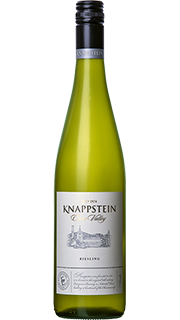
Knappstein Riesling 2021
Clare Valley, Australia
“Pale straw colour and lovely brightness in the glass. Aromas of crushed citrus leaf, lemon pith and bath salts. Fine and focused on the palate, citrusy, just-ripe white peach, tangy and a touch of phenolic grip shapes the wine nicely.”
92 points – Aaron Brasher, The Real Review
“Pristine and delicately lifted, showing crunchy apple, lemon/lime peel and white floral aromas on the nose, leading to a vibrant palate that’s light and lingering. The wine offers excellent fruit purity and elegance combined with firm acidity, finishing impressively long and mouth-watering. At its best: 2024 to 2034.”
5 Stars & 94 points – Sam Kim, Wine Orbit
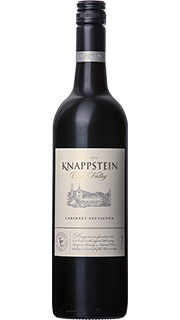
Knappstein Cabernet Sauvignon 2019
Clare Valley, Australia
“A gorgeous cabernet with a nose that is all blackcurrant, chocolate and spices. Great weight and balance to the palate that is intense with flavour and has great tannins.”
5 Stars & 98 points – Winestate Magazine
“Varietally pure and enticing on the nose showing cassis, tobacco, clove and roasted nut characters, leading to a succulent palate that’s supple and flavoursome, offering fabulous drinking. At its best: now to 2029.”
5 Stars & 94 points – Sam Kim, Wine Orbit
Gold Medal & Trophy for Best Vintage Section Cabernet Sauvignon – Langton’s Clare Valley Wine Show 2021
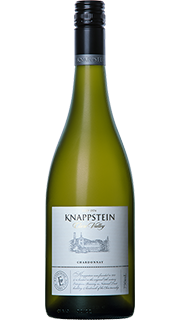
2021 Knappstein Chardonnay
Clare Valley, Australia
Newly released, the 2021 Chardonnay is layered with varietal fruits of peach and pear. A subtle touch of spice from the oak, and a clean mineral finish makes this a complex, yet easy to drink wine.
Rutherglen
Rutherglen is a wine region gem situated in northern Victoria about three hours from Melbourne. It’s right near the New South Wales border and close to the Murray River. This is a part of Australia steeped in history, with character and personality second to none. It’s famously known as a wine region where fortified wine is liquid gold and has achieved iconic status worldwide. Grapevines came to Victoria’s Rutherglen with the gold rush of the 1850s and the region became Australia’s unchallenged capital of fortified wines and “stickies” (dessert wines). Soils range from red loam over clay through to sandier soils closer to the Murray River.
In 1995, Rutherglen producers came together to create the Rutherglen Muscat Classification. Four categories were established to create uniformity across the region and dispel any confusion around the differing styles. They are Rutherglen Muscat, with an average age of 3 to 5 years; Classic Rutherglen Muscat, average age 6 to 10 years; Grand Rutherglen Muscat, average age 11 to 19 years; and Rare Rutherglen Muscat, average age 20-plus years. Topaques/Muscadelles can also come in these categorised styles.
While big, bold flavours characterize many of Australia’s finest wines, others have more subtle Old-World finesse that comes from traditional winemaking processes. But wait there’s more – Australia’s other display of vinous prowess is making exquisite fortified and sweet wines as exemplified by D&N’s Rutherglen champion – Chambers Rosewood.
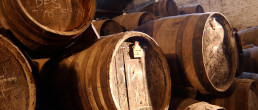
[Chambers Rosewood wines are] ‘some of the world’s most remarkable dessert wines.’
As described by legendary wine writer Robert Parker Jr
Chambers Rosewood Vineyards
Chambers Rosewood Vineyards is a family-owned winery established in 1858. Nestled in the heart of Victoria’s famed Rutherglen region right on the border between Victoria and New South Wales. Chambers Rosewood is currently operated by Stephen Chambers supported by his father, the legendary Bill Chambers. Stephen is the 6th generation of this family to make exquisite wine at Rosewood. These are honest wines with a strong sense of place.
“Anyone who has ever tasted Chambers fortified Tokay or Muscat realizes the world’s reference point for these wines begins and ends with Chambers.”
Robert Parker’s The Wine Advocate
Chambers Rosewood’s gnarled old vines are now more than 100 years old, even though the original vineyards were replanted in the late 1890’s due to phylloxera. Now with some irrigation the low yielding old vines produce fruit brimming with highly concentrated flavours for their world-renowned wine styles.
The Chambers Rare Muscat and Rare Tokay have consistently received perfect, 100 out of 100 scores! Across their entire range of fortified wines, Chambers Rosewood are Internationally acclaimed and sought after. These wines are a national treasure.
The Rare range of vinous gems are the product of a solera system so there is total consistency from year to year. The solera for this wine is meticulously maintained and has been for over 60 years, and for a wine to be considered worthy to enter the Rare solera, the single vintage must be of exceptional quality. Believe it or not, once opened the wine can be enjoyed over many months.
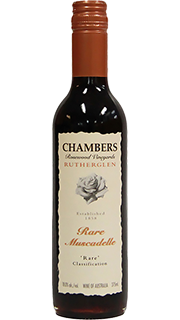
Chambers Rare Muscat (375ml)
Rutherglen, Australia
“Made from vines dating back to the early 1900s and from a solera blending system that goes back to the 1890s, this is a fortified to fall head-first into. It envelops the senses with notes of walnut paste, praline, date, chocolate, and a woodsy whisper. It glides across the tongue like satin but before it gets too cloying, the acidity takes hold like a buoy, the finish seemingly endless. This will live on and on, it is everything you could hope for in an aged, fortified wine.”
100 points – Wine Enthusiast (Very Limited availability)
“Dense mahogany; incredibly concentrated and complex yet has a quicksilver lightness on the back-palate; the layers of flavour are almost countless. This wine is truly something that all wine lovers must experience at least once in their lives. One sip was taken for this entire note and the flavour is still building.”
99 points – James Halliday Australian Wine Companion
“[] Epically long in the finish – this is an experience not to be missed. One of the great names in Rutherglen fortifieds”
98 points – Robert Parker’s The Wine Advocate
“The lower end wines are spectacular values and the Rare bottlings approach perfection. They should not be missed. Chambers Rosewood Vineyards stands at the summit of fortified wine producers.”
100 points – Jay Miller, The Wine Advocate

Chambers Rare Muscadelle (375ml)
Rutherglen, Australia
“The Rare series has achieved perfection frequently in these pages. Happily nothing has changed. The Non-Vintage Rare Muscadelle is amber/brown approaching black. It offers an ethereal perfume of fig, graham cracker, coconut, caramel, and spice box. Thick, rich, and concentrated, it goes on and on in the finish. Chambers Rosewood Vineyards makes my short list of greatest fortified wine producers. The winery was started in 1858 and continues to be owned by the Chambers family. Some of the material for these blends is over 100 years old. As Robert Parker noted in Issue 168, these wines are the product of solera systems so there is very little, if any, difference from release to release.”
100 points – Robert Parker’s Wine Advocate
“Polished, unctuous and complex, layering its spice and pepper character through flavors of dried apricot, tobacco and brown sugar. Offers richness, depth and deftness. Drink now.”
95 points – Wine Spectator
“Brown with gamboge rim. Very clean and fresh. Wonderful treacle, richness and lots fruit but not remotely heavy. So energetic!”
19/20 points – Jancis Robinson
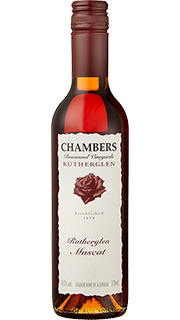
Chambers Rutherglen Muscat
Rutherglen, Australia
“This is pale russet red. The fortification spirit that is added after the wine has spent a mere 24 hours on skins before it is pressed introduces an edge to the Christmas cake, raisin, orange peel and spice that define new-born Rutherglen muscat. Truly great value.”
92 points – James Halliday, Halliday Wine Companion
“…this late-picked Muscat offers a burnt-orange-sunset hue in the glass, with a green rim. Evoking enticing aromas of orange marmalade, honey, medjool dates and almond blossom, the palate continues along similar lines. Unctuous and intensely sweet, there’s just enough acidity to keep this from syrup territory.”
93 points – Wine Enthusiast
As many wine writers have noted, there is plenty of evidence in recent times of the “slimming down” of Australian wine styles. However, there’s still some of the more traditional, plumper styles of yesteryear on display. This is certainly not a negative in our books, as there is more than enough room for both styles as well as everything in between. D&N says Thanks to our Aussie winemaking mates, they’ve got all our wine predilections nicely covered. Cheers maaate!
[Australia] “…has a treasure trove of seriously old vines and seems to be making the most of them at last”
Jancis Robinson, MW

